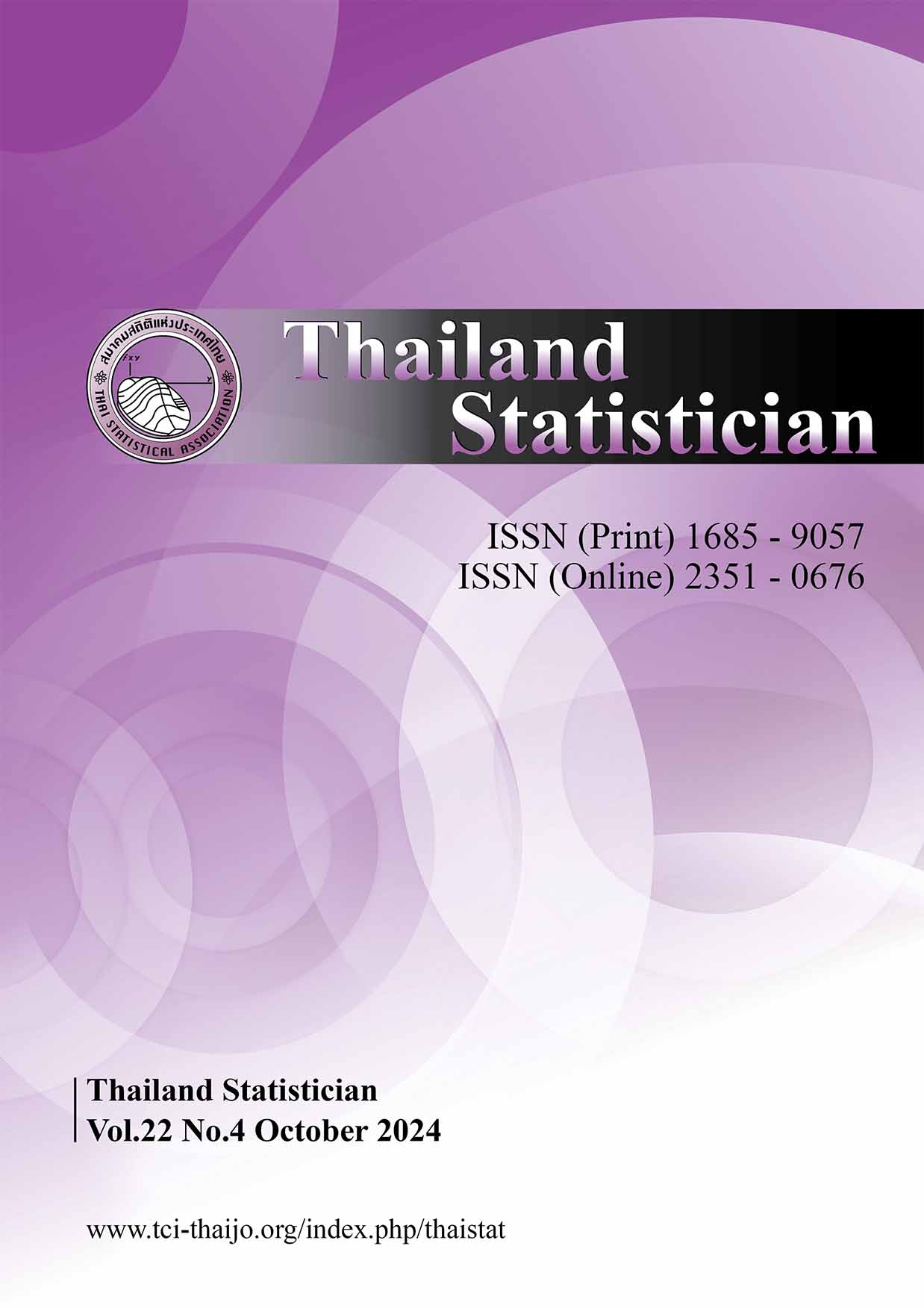Analyzing Stock Performance in the Banking Sector: Unveiling Value-at-Risk and Conditional Value-at-Risk Strategies
Keywords:
Value at risk, conditional value at risk, historical simulation approach, normal exponential weighted moving averageAbstract
This study explores stock ranking in the banking sector using Value at Risk (VaR) and Conditional Value at Risk (CVaR). The research focuses on bank stocks and employs the Normal Exponential Weighted Moving Average (EWMA) method for volatility calculation and the Historical Simulation Approach for model generation. Data from the Thai stock market’s banking sector, specifically the SET Finance index, is analyzed from January 1, 2017, to December 31, 2021, with confidence levels set at 95 % and 99 %. Model quality is assessed through the Violation Ratio, Three-zone Approach, and Normalized CVaR testing. The findings facilitate stock ranking and aid investors in risk estimation. Results reveal the ranking of banks based on VaR and CVaR, with Bank A identified as the highest-risk bank and Bank B as the lowest-risk bank. Two models, VaR using the Normal EWMA method at the 99% confidence level and CVaR using the Historical Simulation Approach at the 95%
and 99% confidence levels, pass the model quality testing and provide valuable insights for stock
ranking
References
Alexander C. Market models: A guide to financial data analysis. New York: John Wiley & Sons;
Bank for International Settlements. Basel Committee on Banking Supervision Amendment to the Capital Accord to incorporate market risks [Internet]. 2005 [cited 2018 Aug 20]. Available from:https://www.bis.org/publ/bcbs119.pdf.
Bosirint H. A comparative analysis of forecasting risk value (Value-at-risk) models [Master’s thesis].
Thammasat University; 2011.
Jorion P. How informative are Value-at-Risk disclosures? Account Rev. 2002;77(4):911-31.
Jorion P. Value at risk: The new benchmark for managing financial risk. 3rd ed. New York: McGrawHill; 2007.
Kanika J. Economic factors influencing changes in stock indices in the Thai stock market: A case
study of the banking sector stock index [Master’s thesis]. Bangkok, Thailand: Ramkhamhaeng
University; 2009.
Lamkul W. Factors influencing profitability of commercial banks: A case study of the top 5 largest
banks in Thailand [Master’s thesis]. Pathum Thani: Bangkok University; 2015.
Luangkosolchai P. A comparison of Value-at-Risk (VaR) and Conditional Value-at-Risk (CVaR) measurement for composite performance indices across multiple industries [Master’s thesis]. Thammasat University; 2015.
Marshall C, Siegel M. Value-at-Risk: Implementing a Risk Measurement Standard. J Deriv.
;4:91-110.
Patiphan S. The relationship between Thai banking sector stock index and foreign banking sector
stock index in Asia [Master’s thesis]. Chiang Mai, Thailand: Chiang Mai University; 2006.
Prapinmongkolkarn W. Portfolio optimization via conditional Value-at-Risk [Working Paper: Independent Study]. Thammasat University. Faculty of Commerce and Accountancy; 2008.
Stock Exchange of Thailand. SET Financials Index [Internet]. 2022 [cited 2022 Aug 15]. Available
from:https://th.investing.com/indices/set-financials.
Taamouti A. Analytical Value-at-Risk and Expected Shortfall under regime switching. Financ Res
Lett. 2009;6:138-51.
Thaicharoen U. Economic factors influencing the stock index of commercial banks in Thailand [Master’s thesis]. Bangkok: Ramkhamhaeng University; 2005.
Varnananda W. Evaluation of VaR and CVaR using different methods [Working Paper: Independent
Study]. Thammasat University. Faculty of Commerce and Accountancy; 2013.
Yamai Y, Yoshiba T. Value-at-risk versus expected shortfall: A practical perspective. J Bank Financ.
;29(4): 997-1015.
Downloads
Published
How to Cite
Issue
Section
License

This work is licensed under a Creative Commons Attribution-NonCommercial-NoDerivatives 4.0 International License.




